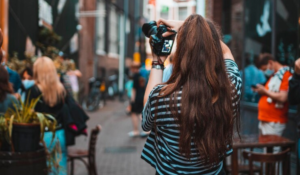Astrophotography: The Ultimate Guide

Since centuries, the art and science of capturing the wonders in the night sky with photography has captured the imagination of many. It is defined as the photography and recording of celestial phenomena and objects. This allows enthusiasts to appreciate and explore the wonders of the universe. This comprehensive guide will explore various aspects of astrophotography. From its history and development to practical techniques, and equipment recommendations.
Astrophotography: An Introduction
Astrophotography is the photography of celestial bodies such as galaxies and planets. It also includes celestial events, like eclipses and showers. Photographers can capture images that would otherwise be invisible to the naked-eye, revealing the beauty of the universe.
Astrophotography: A History
Astrophotography has its roots in the early 19th Century, when pioneers such as John William Draper or Leon Foucault experimented with early photographic techniques for capturing images of the Moon and the stars. Over the years, advances in telescopic technology and design have revolutionized astrophotography. This has allowed modern enthusiasts to capture breathtaking images of the night skies.
Evolution of Technology
Astrophotography has been shaped by technological advancements. Photographers today can enhance their skills with a variety of tools, from the latest digital cameras and telescopes to image processing and digital imaging software.
Astrophotography Types
Astrophotography includes a variety of genres such as nightscape/landscape, deep space, solar system, and many more. Photographers can explore the universe in a variety of ways. Each type offers unique challenges and opportunities.
Accessibility
Astrophotography’s accessibility is one of its most impressive features. There are options for all skill and budget levels, whether you’re an experienced professional or novice enthusiast. There’s something to suit everyone, from smartphone photography to advanced telescopic setups.
Clear Skies Tools
Astrophotography is only successful if the sky is clear. There are many websites and apps that offer data and forecasts on cloud coverage, atmospheric conditions and light pollution. Photographers can plan their shots and find the best viewing conditions with tools like Windy.com and Clearoutside.com.
Light Pollution
Astrophotographers face a major challenge from light pollution, which can obscure faint celestial bodies and reduce the visibility of the sky at night. Photographers must be able to understand the effects of light pollution, and how they can mitigate them. Photographers can find the best locations to shoot using tools like dark sky maps and Bortle scales.
Camera Gear
Astrophotography is a skill that requires both technique and equipment. DSLRs or mirrorless cameras in manual mode allow photographers to make adjustments such as the exposure time, ISO, and aperture. For capturing the night sky in its entirety, wide-angle lenses and tripods are highly recommended.
Moon Phases
Astrophotography is heavily influenced by the phases of Moon, which can affect factors like sky brightness and contrast. Understanding the lunar cycle, and how it impacts different types of astrophotography, is crucial to planning and executing successful shots. Photographers can stay informed by using resources for tracking the moon phases. These include smartphone apps and online schedules.
Broad Techniques
Astrophotography is a broad field of photography that encompasses many techniques. Each technique is suited for different subjects and conditions. Photographers have many tools to help them capture beautiful images of the night skies. These include long exposures, image stacking, tracking and mosaic stitching. Photographers can improve their skills by experimenting with new techniques.
Combining Techniques
Combining multiple techniques can produce superior results for astrophotography. Combining long exposure and image stacking, for example, can improve image clarity, reduce noise and allow longer exposures. Tracking, on the other hand, can provide longer exposures with no star trails. Understanding how to combine different techniques can help photographers get the results they want.
Personal Experience
I am a hobbyist amateur astrophotographer who has had the pleasure of photographing the wonders of night skies. I have experienced moments of awe, wonder and challenges along with learning opportunities. My experiences have given me a greater appreciation of the beauty and complexity in the universe. I’m passionate about sharing this knowledge with others.
Community Engagement
Astrophotography can be a rewarding hobby because of the camaraderie and sense of community amongst enthusiasts. Engaging with other photographers, whether online or in person, and sharing tips, techniques, and experiences can be extremely enriching. I encourage my readers to connect with other astrophotographers, join local astronomy groups, and participate in online forums to further their connection to the universe.
The conclusion of the article is:
Astrophotography can be a fun and rewarding hobby. It gives photographers a new perspective on the universe. Anyone can capture beautiful images of the night skies and discover the wonders of the universe with the right tools, skills, and attitude. I invite you, whether you are a seasoned professional or a curious novice, to explore the astrophotography world and embark on your journey through the stars.



